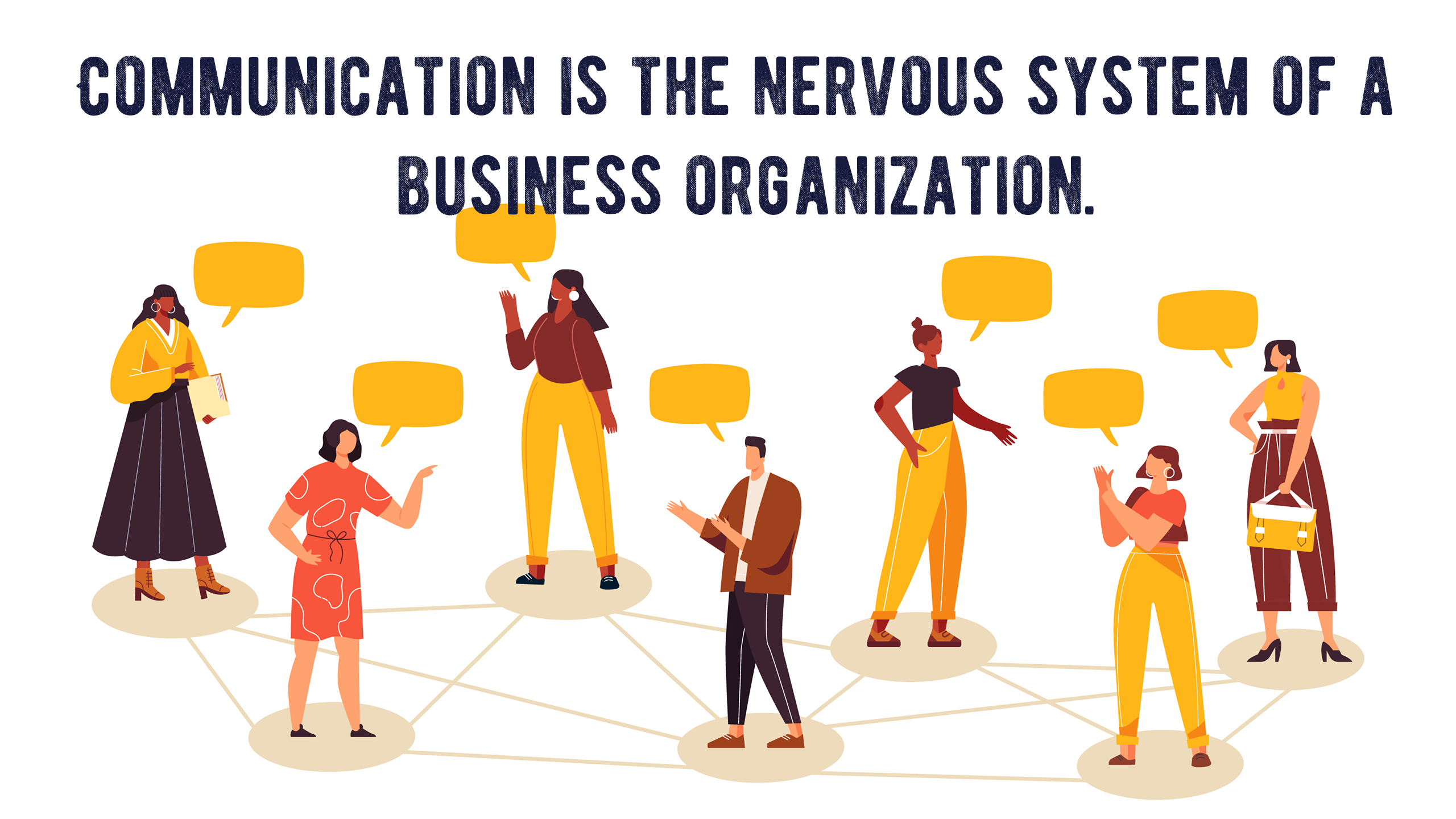Q. 1. “Communication is the nervous system of a business organization.” In the light or this statement, explain the meaning and significance of communication in organizational context. Also phase out the basic elements in the process of communication.
[UPTU-MBA-2005-06]
📢 Communication: The Nervous System of a Business Organization
In the dynamic world of business, communication is more than just talk—it’s the system that keeps every organizational part in sync, just like a body’s nervous system. From strategic planning to daily operations, effective communication ensures that ideas flow, actions align, and goals are achieved.
💡 What Is Communication?
Communication is a vital managerial function, deeply woven into every facet of organizational activity. Let’s explore its meaning through respected definitions:
- Peter Little
“Communication is the process by which information is transmitted between individuals and/or organisations so that an understanding response results.” - W.H. Newman & C.F. Summer Jr.
“Communication is an exchange of facts, ideas, opinions, or emotions by two or more persons.” - William Scott (Organisation Theory)
“Administrative communication is a process which involves the transmission and accurate replication of ideas ensured by feedback for the purpose of eliciting actions which will accomplish organisational goals.”
👉 Key Takeaways for Students:
- Communication isn’t just sharing information—it’s about understanding, replication, and action.
- Feedback ensures accuracy and prevents distortion of the message.
- Organizational goals are at the heart of effective communication.
🎯 Importance of Communication in Business Organizations
Communication serves as the backbone of organizational success. For business students, here’s why it matters:
- 🔗 Coordination: Aligns departments and individuals toward shared objectives.
- 🚦 Decision-Making: Provides accurate and timely data for strategic choices.
- 🤝 Team Building: Enhances trust, clarity, and collaboration among members.
- 🗣️ Leadership & Influence: Empowers managers to lead, inspire, and resolve conflicts.
- 📈 Productivity & Efficiency: Reduces misunderstandings and streamlines operations.
Without communication, even the most brilliant business strategies can collapse under confusion and disconnection.
🧩 Elements of the Communication Process
Effective communication is a structured process involving several key components:
| 🧠 Component | 🔍 Description |
|---|---|
| Sender | Initiates the message based on intent and purpose |
| Message | The content being shared—facts, ideas, emotions |
| Medium | The channel used (email, speech, report, etc.) |
| Receiver | The target audience or individual intended to understand the message |
| Feedback | The receiver’s response, confirming clarity or requiring adjustments |
✅ Real-World Example:
Two professionals greet each other with folded hands:
- Sender expresses goodwill.
- Receiver interprets and responds in kind.
- Mutual understanding and feedback complete the communication loop.
❌ Communication Breakdown:
If a Hindi-speaking manager addresses a Tamil-speaking employee in Hindi without translation:
- Message is sent.
- Receiver cannot decode.
- No feedback occurs.
- Communication fails.
🧠 Final Thoughts for Future Managers
As aspiring business leaders, mastering communication isn’t optional—it’s essential. Whether you’re crafting a persuasive pitch, guiding a team, or resolving a conflict, your ability to communicate clearly and strategically will determine your effectiveness.
Communication is not just the nervous system—it’s the lifeblood of a thriving organization.














